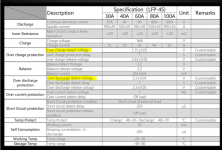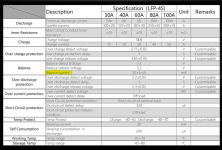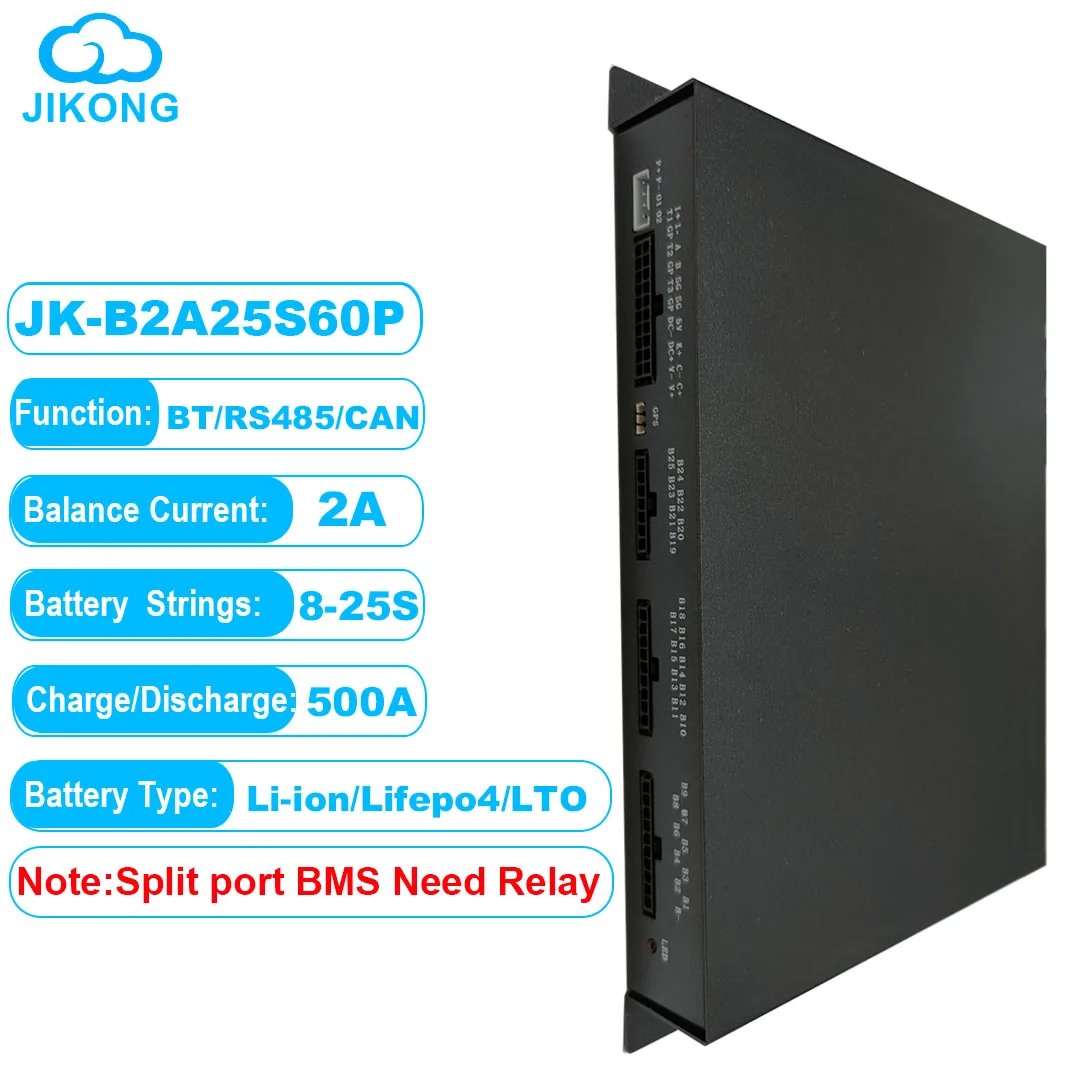MkngStffAwesome
Active member
Firstly i dont claim to be an expert on these subjects, this is just a brain dump of what i have learnt in relation to BMS and chargers for our application.
BMS
Firstly we need to understand that "BMS" does not mean a "Charger". A charger is typically an independent device to the "BMS"

Typically the Job of a BMS is to monitor the voltage of a complete pack of cells and ensure that no individual cell goes out of the predefined range.. If the voltage of a cell goes to high due to charging or to low due to discharging then the battery will be disconnected from the Motor or Charger to prevent catastrophic damage to the battery. In this example below these thresholds are customizable.

As part of the "BMS" it's typical for it to "Balance" the pack of cells. It will detect a variance in individual voltages between the cells and try to equal them all out so all the cells are the same voltage.. This is typically done via a resistive load added to the cells displaying higher voltages like the one below, but it can also be done with an "Active" balance that takes some change from the higher voltage cells and gives it to the lower voltage cells.. This is far less wasteful than a resistive Balancer.
It's important to add that you can get Balancers independent of a more complex BMS.
Some chargers have balancers as part of the chargers. This is the case when it's not expected for there to be a BMS in place.. Like in RC applications.

Do i need a BMS, Balancer for my E-turbo setup.
In theory you do not need a BMS because in a perfect world the battery will be perfectly balanced from the factory and you'll never over charge or over discharge the battery. However we do not live in such a world so a BMS is a good idea to prevent damage to your batteries by accident.
If you don't have a BMS in place during charging and discharging you'll have no way to know if the individual cells are out of voltage and there will be nothing in place to save your batteries, So yeah you need one. However as long as you have a high current Balancer in place and you use some other voltage monitoring system to prevent total Pack over charge or discharge then you should be "OK". This strategy normally also includes intentional under charging and under discharging to give the pack some room for different individual cell voltages despite the balancer being in place.. This is the case because most Balancers will be UNable to move enough current around when the battery is being charger or discharged at higher rates than the balancer can achieve.
BMS
Firstly we need to understand that "BMS" does not mean a "Charger". A charger is typically an independent device to the "BMS"

Typically the Job of a BMS is to monitor the voltage of a complete pack of cells and ensure that no individual cell goes out of the predefined range.. If the voltage of a cell goes to high due to charging or to low due to discharging then the battery will be disconnected from the Motor or Charger to prevent catastrophic damage to the battery. In this example below these thresholds are customizable.

As part of the "BMS" it's typical for it to "Balance" the pack of cells. It will detect a variance in individual voltages between the cells and try to equal them all out so all the cells are the same voltage.. This is typically done via a resistive load added to the cells displaying higher voltages like the one below, but it can also be done with an "Active" balance that takes some change from the higher voltage cells and gives it to the lower voltage cells.. This is far less wasteful than a resistive Balancer.
It's important to add that you can get Balancers independent of a more complex BMS.
Some chargers have balancers as part of the chargers. This is the case when it's not expected for there to be a BMS in place.. Like in RC applications.

Do i need a BMS, Balancer for my E-turbo setup.
In theory you do not need a BMS because in a perfect world the battery will be perfectly balanced from the factory and you'll never over charge or over discharge the battery. However we do not live in such a world so a BMS is a good idea to prevent damage to your batteries by accident.
If you don't have a BMS in place during charging and discharging you'll have no way to know if the individual cells are out of voltage and there will be nothing in place to save your batteries, So yeah you need one. However as long as you have a high current Balancer in place and you use some other voltage monitoring system to prevent total Pack over charge or discharge then you should be "OK". This strategy normally also includes intentional under charging and under discharging to give the pack some room for different individual cell voltages despite the balancer being in place.. This is the case because most Balancers will be UNable to move enough current around when the battery is being charger or discharged at higher rates than the balancer can achieve.
Last edited:








